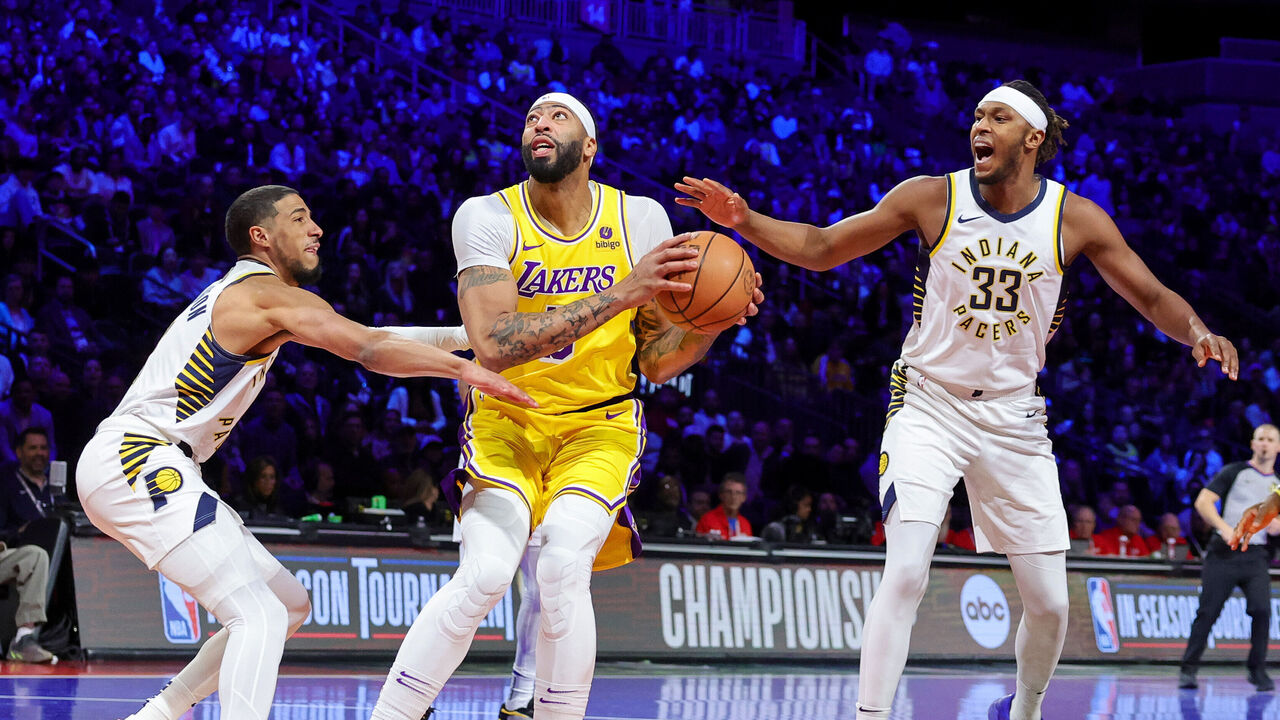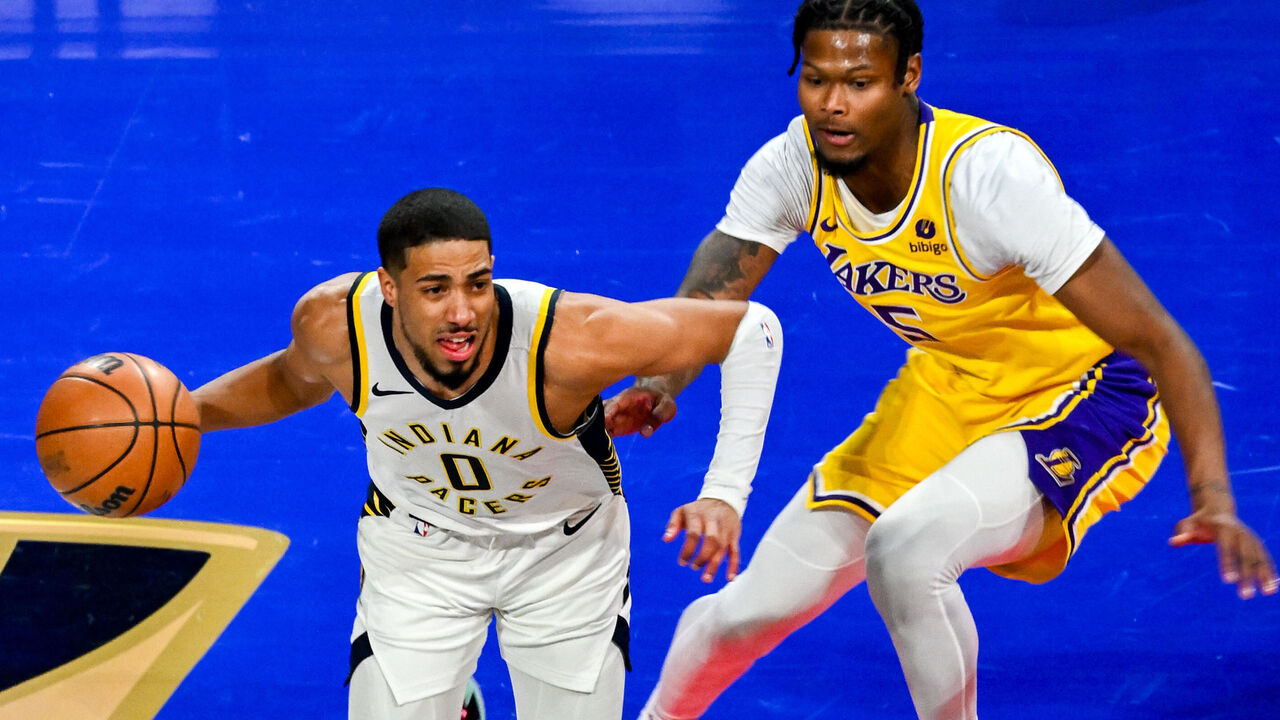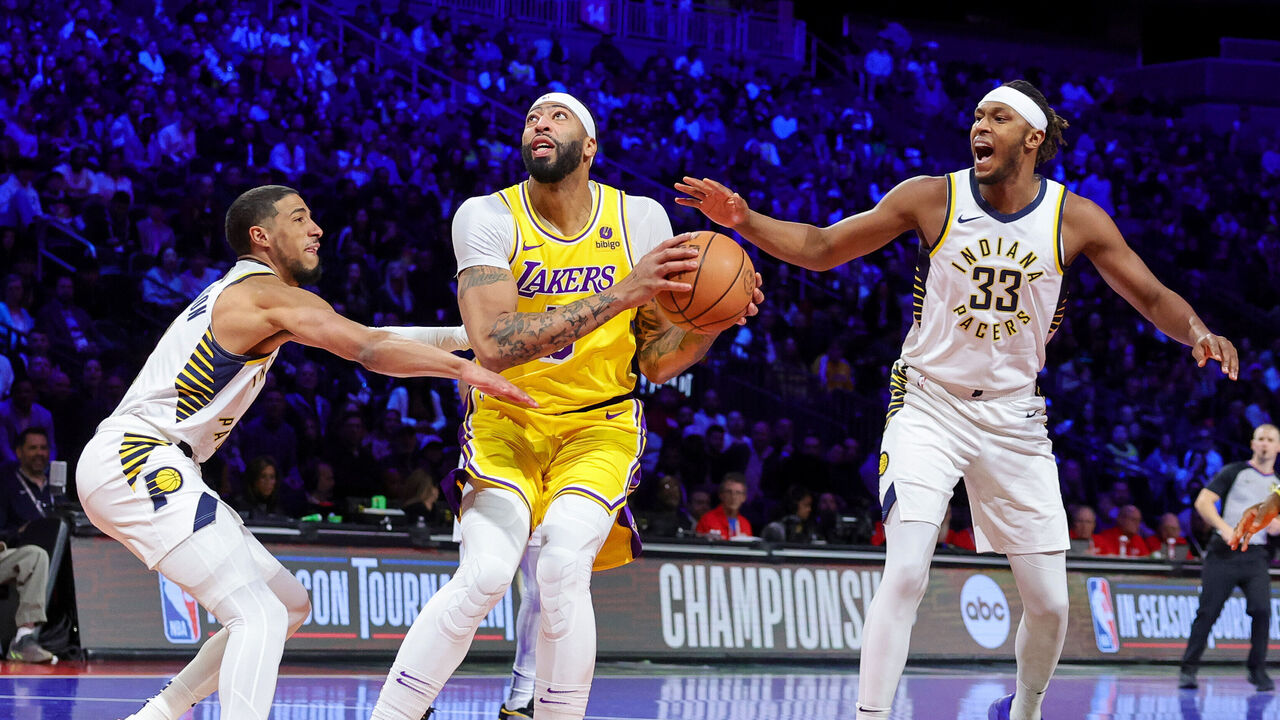What we learned about the Lakers, Pacers, and NBA Cup
The Indiana Pacers and Los Angeles Lakers were really the perfect representatives to make the NBA’s inaugural In-Season Tournament final feel like a capital-E Event. In one corner, a young, upstart, small-market team relishing the novel opportunity (for most of them) to play a game with real stakes; in the other, a highly decorated veteran group, representing the league’s ultimate prestige franchise, still clearly motivated by the prospect of winning this shiny new thing (plus, y’know, the half-million-dollar per person prize that came with it).
The game itself was choppy – beset by fits and starts, slowed by bundles of free throws – and the atmosphere was tempered somewhat by its neutral-site setting. It wasn’t the prettiest or most exciting basketball the tournament had to offer, but in terms of effort and tactics, the Lakers’ 123-109 victory had the feeling of playoff basketball in December. That made it a fitting capstone to the league’s triumphant initial foray into manufactured midseason stakes.
The marker of success for this event, and the determinant of its staying power, was always going to be engagement from both players and fans; securing the former would be essential to capturing the latter. The NBA obviously can and should make some tweaks to the event – potentially including clearer tiebreaking scenarios, better court design, enhanced incentives for victorious teams, or rethinking the neutral venue – but the league cleared the first and most important hurdle: The players clearly cared. The participants in the final competed their tails off in a game that didn’t even count towards the regular-season standings, and several stars who fell short expressed disappointment that they weren’t able to punch their tickets to Las Vegas.
The In-Season Tournament needs several years to build up a real sense of prestige. But if it means something now, it feels like a safe bet that it’ll mean something more in the future.
And it’s not exactly a bad thing for the league that the Lakers won the first iteration of the NBA Cup, or that LeBron James took home inaugural tournament MVP honors. Indeed, if the league office had been given the chance, this is probably the exact script they’d have written. That fact will surely prompt some conspiracy theorizing about preordained outcomes, and the circumstances that led to L.A. making the final in the first place fanned those flames. But there should be no controversy or confusion about why the championship game played out the way it did.
The great thing about a meaningful contest at this juncture of the season is that it can actually teach us something about the teams involved. So let’s talk a bit about what we learned.
Lakers
The Lakers’ defense, when fully dialed in, looks to be championship caliber. Incredibly, they went 7-0 in tournament play despite being 8-9 in all other contests, which could be taken as a sign that they can reach another gear when the games matter. To wit: The Pacers came into the contest riding a historic offense that was 8.8 points per 100 possessions better than the league average, which would rank second all time behind only the 2003-04 Mavericks, according to Basketball Reference. But L.A. defended them as well as anyone has done all season, limiting Tyrese Haliburton and Co. to a 101.9 non-garbage-time offensive rating (compared to their season-long mark of 123.9).
The Lakers’ game plan hinged on aggressive pick-and-roll coverage that sought to pressure Haliburton – the breakout star of not only this tournament, but this season as a whole – and get the ball out of his hands. Accomplishing that relied on several things.
It relied on the space-devouring length and agility of Anthony Davis, who was up at the level and in Haliburton’s line of sight all night. It required size and vigilance at the point of attack from the likes of Cam Reddish, Jarred Vanderbilt, and Max Christie, who were tasked with staying attached to Haliburton and funneling him into the help, lest he burn them with his trademark screen rejects. Perhaps more than anything, it hinged on immaculate low-man help from James, who made proactive rotations and buzzed around the court with a verve that (stop me if you’ve heard this before) belied his age.
The Lakers as a whole were on a string with their rotations on the back side of their hard hedges, not only closing out to shooters but cracking back to clean the defensive glass. And while Haliburton still managed to rack up 20 points and 11 assists on 67% true shooting, he did a big chunk of that damage off of broken plays or in transition. When the Lakers were able to set their defense, they were largely able to bottle him up and force other Pacers to make plays or hit shots. They held Haliburton to his lowest usage rate, and Indiana to its lowest half-court offensive rating (80) of the season.

This is a defensive unit that’s been trending up and ranks second in the league over the last 15 games. (That doesn’t include the tournament final, which, ridiculously, doesn’t count on the official record – another thing the league should think hard about amending.) The Lakers’ offense looked downright dominant against the Pacers’ porous defense, but this season it hasn’t generally looked capable of being better than average due to a dearth of shooting and supplemental playmaking on the wing. If they’re going to compete, their defense will have to carry them.
Pacers
Indiana is the exact opposite, and in that sense, too, this game was instructive. Against the Lakers, we saw the twin extremes of both an offense and a defense dead set on avoiding the 3-ball. The Pacers’ defensive scheme this season has sometimes looked like a mad science experiment. They essentially invite their opponents to attack the rim, and opposing drivers, rollers, or cutters usually don’t even see extra defenders en route to the cup. This is ostensibly in service of minimizing the damage that can be inflicted upon Indiana from behind the 3-point line, and in that sense, you could say the Pacers are succeeding: They allow by far the lowest rate of opposing threes in the league.
But is it really a success when they’re getting shredded to ribbons on the interior and carrying the league’s third-worst defensive rating as a result? Their strategy might be workable if their personnel were capable of both elite point-of-attack containment and masterful individual rim deterrence – like, say, last year’s Bucks were. That is simply not the case for a team with turnstiles like Haliburton, Buddy Hield, Bennedict Mathurin, and Obi Toppin frequently guarding on the perimeter. And Myles Turner hasn’t exactly done his finest work as a backstop this season either.
So, here they had a consequential game against a Lakers team that doesn’t love shooting threes anyway – ranking 27th in 3-point attempt rate and 26th in accuracy – but instead likes to hunt the exact shots Indiana’s defense is engineered to concede. And it proved to be a perfect storm of sorts. The Lakers shot 2-for-13 from 3-point range in the game, a hilariously minuscule number of makes and attempts in this day and age. (Heck, coach Darvin Ham said before the season that he wanted Davis alone to shoot six threes a game.) But it didn’t matter because James, Davis, and Austin Reaves were simply able to slice through the middle of the floor and find minimal resistance on the back line.

James either drove the ball or got involved as a screener and roller, often turning those rolls into post-ups against mismatches. Davis dove and slashed to his heart’s content, finishing with 41 points on 30 shooting possessions. Reaves came off screens and encountered no nail help and minimal rear-view pressure, so he cruised in for comfortable floaters and layups. When help did come, it was usually late and often resulted in fouls. All told, the Lakers scored 86 points in the paint and 27 from the free-throw line. The game marked the first time since early 2020 and just the second time since 2017 that a team has won while hitting two or fewer 3-pointers. The Lakers’ 123 points were also the most scored by any team while hitting fewer than three long balls since 2005.
This tournament was a great showcase for the Pacers, but they probably need to find a way to upgrade their defensive personnel if they want to be taken seriously as a playoff team. They also need to be willing and able to adjust their scheme, especially against interior-oriented teams.
The Lakers, for their part, showed how formidable they can be when they get the most out of Davis and when James decides it’s time to flip the switch. And it’s been great to see Reaves continue to rediscover last season’s form after a bumpy start since moving to the bench. But they can’t rely on facing defenses like Indiana’s that give them all they can eat inside the arc. Internally or externally, they need to find a solution to their shooting woes.
Until April, though, the Lakers can hang their hat on having won the only thing there is to win in the 2023-24 season.


